To superiority on land
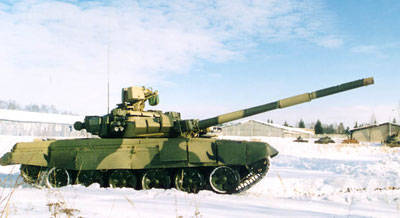 The questions are answered by the Commander-in-Chief of the Ground Forces, Colonel-General Alexander POSTNIKOV.
The questions are answered by the Commander-in-Chief of the Ground Forces, Colonel-General Alexander POSTNIKOV.- Alexander Nikolayevich, the Ground Forces played an important, often decisive role in the defense of our Fatherland. Has their significance changed under modern conditions, taking into account the tendency of increasing the proportion of forces and means used in the aerospace field?
- Indeed, over the past decade, the military significance of aerospace has increased significantly due to the use of high-tech systems, especially in the interests of conducting reconnaissance, electronic warfare, communications, navigation, and long-range fire strikes. And in the future, this trend will only increase.
However, it is impossible not to take into account that the main sphere of human activity today and in the foreseeable future is the earth's surface. And military conflicts arise, as a rule, because of "earthly" problems: territorial disputes, the desire to establish control over raw materials, the redistribution of spheres of influence, political, ideological, religious and other contradictions.
Given the expanses of our country and the length of its land borders, it is obvious that it is simply impossible to reliably ensure the defense capability of our state without the widespread use of the Ground Forces. They represent a universal and multifunctional type of the Armed Forces, military units of which are able to occupy and hold areas and lines for a long time in order to consolidate the success achieved. That is, as the forces of the "territorial presence", the Ground Forces continue to play a decisive role in the defeat of the enemy and the achievement of the goals of military operations even in modern conditions. Yes, they do it in cooperation with other branches of the Armed Forces and the types of troops. But other types of Armed Forces and arms of service, as a rule, act in the interests of the Ground Forces.
There is no need to go far for examples. Only through decisive and swift actions of the units and parts of the Ground Forces (with the support of the Air Force, of course) in August 2008, was it possible to quickly force Georgia to peace and prevent the genocide of the people of South Ossetia. The same can be said about the counter-terrorist operation in the North Caucasus, where the Ground Forces also carried out the bulk of the tasks of defeating illegal armed groups. All this testifies to the leading role of the Ground Forces in the system of modern armed struggle and ensuring the military security of the state.
At the same time, the increase in the share of forces and facilities operating in the aerospace sphere places high demands on the organization, equipment and tactics of actions of formations and units of the Ground Forces.
On the one hand, it is necessary to increase their ability to reliably protect, disguise and combat the enemy’s aerospace attack weapons, to counter their reconnaissance and airborne EW facilities.
On the other hand, they must learn to closely interact with their aerospace forces and assets in order to make the fullest possible use of their capabilities in the field of combat operations (meaning intelligence, electronic warfare, communications, navigation, etc.), as well as results rocketaviation blows to the enemy.
The implementation of these requirements will, in our opinion, have a positive impact on the effectiveness of the use of formations and units of the Ground Forces, their adaptability to the conduct of autonomous, highly maneuverable combat operations, including in isolated areas, apart from the main forces and in the most difficult physiographic conditions. .
- These requirements were one of the reasons for the large-scale structural transformations in the Ground Forces, during which the divisions were transformed into brigades?
- Yes of course. In our opinion, the divisional format of the organization of the Ground Forces has already become obsolete. Some military experts call the divisions “dinosaurs on the streets of cities,” and you can probably agree with them. It is especially difficult to use divisions in difficult conditions of mountain-wooded areas, in northern areas and in urbanized areas, where settlements are found at every turn. It is not by chance that the ground forces of most countries of the world have already moved or are moving to a brigade structure.
Compact, maneuverable, equipped with modern weapons, well-adapted to the autonomous actions of the brigade is more effective in the conduct of modern combined-arms operations. And what else is very important, they are kept in constant readiness for use and can be quickly transferred to the threatened direction, including transport aviation.
The expediency of transition to a brigade organization is confirmed by the experience of conducting large military exercises, such as, for example, Vostok-2010. This has been repeatedly mentioned in the mass media. So I will not repeat.
- To date, the structural changes carried out in the Ground Forces as part of giving the Armed Forces a new look have been largely completed. What's next? What are the most pressing tasks for the construction and development of the Ground Forces in the coming year?
- There are still a lot of tasks to be solved, they are quite complex and multifaceted. First of all, we will continue to improve the organizational structure of formations and units, taking into account the experience of military exercises, trends in the content and nature of wars and armed conflicts, the emergence of promising means of armed struggle.
Another important task is to re-equip the Ground Forces with new, modern weapons and military equipment. As you know, the President of the Russian Federation set the task to bring their share to 2015 percent by 30, and to 2020 percent by 70 year. The task is not easy, but we must fulfill it in any case.
It is also necessary to improve the efficiency of command and control of military units of the Ground Forces, primarily due to the introduction of a unified automated command and control system weapons at the tactical level, as well as digital communications.
It is necessary to carry out transformations in the system of combat training, aimed at increasing its intensity, efficiency and quality by introducing new programs, improving the training and material base, increasing the methodological skills of commanders of all degrees and introducing outsourcing, which allows eliminating personnel separation from classes. The course of combat training is to be sent into the mainstream of research and development of new forms of use and methods of operations for troops inherent in modern wars and armed conflicts.
Another very important task is the introduction of professional sergeants into the Ground Forces of the Institute. It is necessary to attract really worthy candidates for these positions, train them in high quality and ensure that they strive to serve in the army for a long time. Without this, it is hardly possible to talk about reaching a qualitatively new level in the preparation and use of the Ground Forces.
As you can see, the scope of work on the further construction and development of the Ground Forces is very significant, requiring our sustained attention and energetic actions.
- As reported, in 2010, the Ministry of Defense reviewed the functions of all officials and military command bodies and substantially reduced them. How have the tasks and responsibilities of the Ground Forces Command changed in this connection? And how can this affect the quality of the solution to your tasks?
- The revision of the functions you are talking about was done in order to eliminate complete duplication, when everyone was responsible for everything, but it turned out that no one was fully responsible for anything. These transformations, of course, affected the High Command of the Ground Forces.
Some of our tasks were transferred to joint strategic commands, some - to other central bodies of military control.
Nevertheless, we have retained such important functions as planning and organizing the implementation of measures for the construction and development of the Ground Forces, organizing, conducting and monitoring measures for combat training, training junior specialists and sergeants in the interests of the Ground Forces. At the same time, the Main Command of the Ground Forces was charged with the responsibility for organizing interspecific combat training, in connection with which the status of the command body for the combat training of the Ground Forces was raised. It was transformed into the Main Directorate of Combat Training of the Ground Forces.
In addition, in the field of activity of the Ground Forces Main Command, peacekeeping activities, determination of the main directions of development of the Army weapons system for the 15-year perspective, participation in the development and implementation of the State Armaments Program regarding our type of Armed Forces, and some other functions remained.
Along with this, the task was added of managing emergency response measures at the facilities of the Ministry of Defense of the Russian Federation and assisting the Emergencies Ministry of Russia. This was dictated by the events of last year related to extinguishing forest and peat fires.
All the above tasks of construction and development of the Ground Forces, which are in the competence and sphere of responsibility of the High Command, we, despite significant reductions, are able to solve qualitatively and in a timely manner.
- This year, the formations and units of the Ground Forces are engaged in new combat training programs. What is the essence of change? And can we already speak about the positive effect of the introduction of new programs?
- Yes, since 1 December 2010, the formations and units of the Ground Forces are engaged in 10-month combat training programs (instead of 5-month), and junior specialists are trained for three months (previously it was 5,5 a month).
The essence of the changes is to increase the intensity and quality of combat training, increase the duration of the stages of single-person training of military personnel and combat coordination of units. Thus, the duration of the school day increased to 8 hours instead of six, and during field exits - 10 hours. At the same time, Saturday is a full day off. Every day, military personnel do 4 — 5 hours of physical training, taking into account, of course, morning physical exercises and mass sports work.
The most important exercises, exercises and field exits are planned and conducted in a comprehensive manner with the participation of military units of other types of the Armed Forces, branches of the armed forces and security forces of the Russian Federation. This allows us to achieve high-quality working out of the issues of organization and maintenance of interaction when they jointly solve combat missions in a modern all-arms battle.
Another feature is that the new program includes a section on the preparation of all units to perform peacekeeping tasks. Previously, this issue was studied only by compounds and parts intended for peacekeeping activities under a special program. With this approach, any unit of the Ground Forces in a short time will be able to begin to perform these specific tasks.
The transition to 3-month training programs for junior specialists allows them to be released three times a year, which, in our opinion, will lead to an increase in the combat capability of formations and units of the Ground Forces, where after training they will serve for 9 months, rather than six, was earlier. True, this will require the extension of the spring draft campaign on the 1,5 month, until the end of August.
New programs are being tested, and it is premature to talk now about any effect of their introduction. This will be substantively judged only by the results of final checks and large military exercises. That is, at the end of the school year.
- How is the training of professional sergeants organized for the Ground Forces? What are their living conditions? Do selected candidates cope with training programs?
“We started training professional sergeants back in 2009 in a specially created training center based on the Ryazan Airborne School, which is now a branch of the Combined Arms Academy of the Armed Forces of the Russian Federation Military Educational and Scientific Center. In this center, sergeants are trained in the specialties of the Ground, Airborne Forces, communications and automotive troops. Duration of study - 2, 10, for the months of secondary professional education programs
In 2010, the second set of candidates passed, and not only to the Ryazan center, but also to some other military educational institutions of the Ground Forces. The number of students so far, of course, is small, which in general is understandable. Firstly, there are still few people willing to link their lives with the army due to the lack of attractiveness of military service, and secondly, very strict requirements are being placed on candidates and many of them do not pass the selection screen. However, we will not soften the requirements; quality in this case is more important than quantity.
As for the living conditions of future sergeants, they are pretty good. So, in the Ryazan center, they are located in two four-storey cadet dormitories, in separate rooms for 3 — 4 people. There is everything necessary for life, life and maintenance of the educational process.
With the training programs, the cadets are doing quite well in both civil and military disciplines. This is largely due to the fact that the size of their monetary allowance depends on the results of their studies. For example, in the Ryazan center, excellent students are already receiving thousands of rubles for 21, and horoshisty - for 5 thousands less.
After graduation and appointment to the position, the amount of money allowance for sergeants will increase significantly and should exceed the average salary in the country. So, a sergeant is a squad leader (tank) from 2012 will receive approximately 34 thousand rubles.
- Will there be a new set of candidates this year? In which educational institutions and in what volumes?
- Necessarily will. In addition to the Ryazan Center, it is planned to recruit other branches of the Military Training and Research Center "Combined Arms Academy of the Armed Forces of the Russian Federation." This is primarily the Moscow and Far Eastern Higher Military Command Schools, as well as the Omsk Tank Engineering Institute.
In addition, the admission of candidates for training as sergeants will be organized in the Mikhailovsky Artillery Academy (St. Petersburg), the Military Academy of the Air Defense Forces of the Ground Forces (Smolensk) and the Military Academy of the RCBZ and the engineering troops (Kostroma) in the relevant specialties .
The specific number of enrollment in each military school will be determined somewhat later, after clarifying the needs of the troops for these specialists.
- Where should the guy who wants to become a sergeant go? What are the selection criteria?
- We consider two categories of candidates for training for sergeants in secondary vocational education programs. The first is the citizens of the Russian Federation who have passed military service, whose age does not exceed 24 years. They should contact the military registration and enlistment office at their place of residence and submit an application there before 20 in April of the year of admission.
The second category is military personnel in military service under contract (who do not have officer ranks) until they reach the age of 30. They submit a report to the commander of the military unit until April 1 in the year of receipt.
Both categories of candidates must have a state document on secondary (full) general education. The main criteria for the selection of the following: conscious choice of profession sergeant; medical compliance; high motivation for long-term military service; no criminal record; high moral and psychological qualities and discipline; good level of physical development; consent to the conclusion of contracts for the term of training and for 5 years of military service after graduation from a military school.
- Alexander Nikolayevich, and what weapons will professional sergeants and their subordinates receive in the near future? What are the general directions and priorities of the development of the weapons system of the Ground Forces?
- The current armament system of the Ground Forces has three main problems. The first is a small proportion of modern weapons, military and special equipment (VVST). The second is its imbalance, when outdated, inefficient means of reconnaissance, control, communications, navigation, target designation, identification, protection, disguise do not allow to fully realize the capabilities of existing means of destruction, not to mention promising. And finally, the third - disunity, i.e. Too high “variability” of the samples of military equipment, which significantly complicates their use, maintenance and logistical support during combat operations.
To solve these and other problems of the Army’s armament system and prevent them in the future, as well as to determine further ways of its development, the Main Committee developed a Concept for the development of the Army’s armament system for the period up to 2025. Its main purpose is to ensure interdepartmental standardization, multifunctionality, balance and modularity of weapon designs, informational and technical compatibility of individual samples while interacting during joint use. And besides, the concept should help achieve unity of views of the military authorities, developers and enterprises of the military-industrial complex on the development strategy of the VVST for the Ground Forces, taking into account the views of consumers, that is, those who will directly apply them in battle.
In developing the concept, a new approach to the development of weapons and military equipment was used as a single integrated system, including integrated subsystems of the combined-arms units of the Ground Forces. It is proposed to have such integrated subsystems functioning in a single information space around 16. The main ones are the subsystems of armored weapons and military motor vehicles; barreled artillery and multiple rocket launchers; ground-based missiles; anti-tank weapons; air defense systems; intelligence information support; unmanned aerial vehicles; communication facilities; automated control systems for troops and weapons; combat equipment and means of close combat, etc.
Taking into account this approach, the concept identifies the following priorities for the development of the weapons system of the Ground Forces:
- formation of a unified automated system of reconnaissance and information support of the Ground Forces at all levels of control based on further development and integration of highly efficient means of reconnaissance, communications, electronic warfare, navigation, target designation, identification, information exchange, control signals and combat missions, and more .P.;
- development and equipment of troops with various types of precision weapons, both long-range and short-range, non-lethal means, as well as weapons on new physical and technological principles;
- introduction of robotized systems and complexes of the VVST, unmanned aerial vehicles for various purposes, as well as other sets of equipment that ensure the use of models of weapons in remote control mode;
- improvement of combat equipment with elements of intellectual systems, which allows to maximize the effectiveness of the actions of servicemen of various specialties in modern combat;
- creation of small-sized and ultra-small means of armed struggle based on microminiaturization and nanotechnology, especially for solving intelligence and combat control tasks;
- increasing the security and survivability of personnel, combat and support vehicles, meeting the requirements for ergonomics and the habitability of the latter.
The implementation of these and other weapons system development directions presented in the concept will, in our opinion, give the perspective to the combined arms of the Ground Forces the appearance of reconnaissance and attack systems (RPMs) capable of ensuring the timely conquest and retention of information and fire superiority over the enemy, and under favorable conditions - its defeat in the initial or subsequent phases of military conflict of any scale.
- What effect do you expect from the introduction of a single automated tactical level management system? When will it be adopted?
- We are going to introduce a single automated tactical level management system (ESU TZ) not in connection with the digital technology modality, but in order to significantly increase the effectiveness, efficiency, reliability and sustainability of troop and weapon control.
The fact is that the current management algorithms developed in 1940 — 1950-s are no longer suitable, since they do not correspond to the nature of modern combined-arms operations, which have become more dynamic and highly manoeuvrable. In addition, the speed and capabilities of models and complexes of weapons, communications, reconnaissance and EW have significantly increased.
Under such conditions, working on paper maps, hand-picking, summarizing, assessing the situation and making decisions after long-term hearings of various heads and setting tasks with paper orders or using outdated means of communication is a real anachronism. If we manage the troops in this way, we simply cannot react in a timely manner to changes in the situation and lose the initiative, which will inevitably lead to defeat.
Only the introduction of ESU TZ will dramatically improve and accelerate the management of troops and weapons. In this unified system, forces and means of reconnaissance, automated gathering and summarizing of the situation, satellite navigation and digital radio communications will be integrated. On each unit of equipment, whether it be a command-staff vehicle of a brigade commander or an armored personnel carrier of the branch commander, a software and hardware complex — an on-board computer — will be installed. With their help, commanders of all degrees will be able to display an electronic map of the combat situation that is constantly updated in real time, determine the coordinates of their location and targets (objects) of the enemy, set targets for their destruction, promptly issue combat orders, monitor the security of subunits everything you need to solve tasks, etc.
Thus, with the introduction of ESU TZ in the tactical level, a single information space will be created, which ultimately will lead to a significant increase in the effectiveness of the use of formations and units on the battlefield, will allow the enemy to be ahead at all stages of the operation, to seize the initiative, to strike powerful blows with unexpected directions and achieve success with little blood.
To date, the ESU TZ has been practically created and is being tested in one of the units of the Ground Forces. The experimental KSHU carried out in the autumn of 2010, on the whole, confirmed its effectiveness and compliance with the requirements, although some shortcomings were also revealed. Therefore, we decided to give the industry one more year to bring the ESU TZ in line with our requests. And then we will check the system during the brigade tactical exercise planned for the end of 2011, where it will be used not only by the controls, but by the entire force. And only then, if we are satisfied with the result, we will adopt the ESU TZ for service.
- What are the features of the state defense order this year in the part concerning the equipment of the Ground Forces? What modern weapons will go to the connections and parts of the ground forces in 2011 — 2012?
- The main feature of the state defense order of this year is the transition from repairing and modernizing the existing VVST fleet to purchasing only new, up-to-date models for completing equipping units and military units of the Ground Forces.
First of all, it is planned to purchase modern digital communications and automated control systems, such as the automated control system for an anti-aircraft missile brigade (mixed group) of the Polyana-D4М1 air defense forces, a new integrated automation station for tactical echelon of military air defense, and others.
In addition, the ground defense forces of the Army will receive upgraded C-300В4, Buk-М2 and Buk-М3 complexes, short-range anti-aircraft missile systems "Tor-М2У (М)", portable anti-aircraft missile systems "Igla-S" and "Willow".
We will continue to equip missile forces and artillery units and units with Iskander-M operational-tactical missile systems, new multiple launch rocket systems, Khosta and Nona-SVK self-propelled guns, Chrysanthem-S anti-tank missile systems and Sprut cannons. -SD.
From armored vehicles and motor vehicles, purchases of armored personnel carriers of the new BTR-82A, modern evacuation vehicles BREM-K based on the BTR-80 and BREM-L based on the BMP-3, special armored vehicles up to 2,5 tons (“Iveko”, “TNGX”, “Special armored vehicles up to XNUMX tons” (“Iveko”, “TNGX”, “Tnegrump”, “Tnegrump”, special armored vehicles with a payload up to XNUMX tons (“Iveko”, “ТNNXX”, special armored vehicles with a payload up to XNUMX tons (“Iveko”, “ТNNXX, special armored vehicles up to XNUMX tons (“ Iveko ”,“ ТНNXX ”, special armored vehicles up to XNUMX tons and tons (“ Iveko ”,“ ТНNXX, special armored vehicles up to XNUMX tons ” "," Wolf "), as well as new KamAZ trucks of the Mustang family.
High-performance equipment samples will also be provided to equip formations and units of special forces. Thus, the troops of the RCB protection will receive heavy flamethrowing systems TOC-1A, jet infantry flamethrowers of increased range and power in the thermobaric equipment RPO PDM-A and airborne radiation reconnaissance systems of the WRC. And the engineering troops are the newest integrated cleaning and desalination stations on the KAMAZ automobile base chassis (SKO-10 / 5), universal road machines (UDM) and other effective means of engineering armament.
All of these purchases will greatly enhance the combat capabilities of the units and units of the Ground Forces. So, we will change and improve in order to play a decisive role in the matter of ensuring Russia's military security even under modern conditions.
- Alexander Nikolayevich, our conversation takes place on the eve of one of the most beloved holidays by our people - Defender of the Fatherland Day. What would you like to wish to subordinates and colleagues on this holiday?
- I would like to sincerely congratulate the personnel, veterans and civilian personnel of the Ground Forces, as well as all those who contribute to the noble cause of increasing our country's defense capability on Defender of the Fatherland Day. I wish you all good health, happiness, success in service and work for the benefit of our Russia.
- Alexander TIKHONOV, "Red Star"
- http://www.redstar.ru"rel =" nofollow ">http://www.redstar.ru
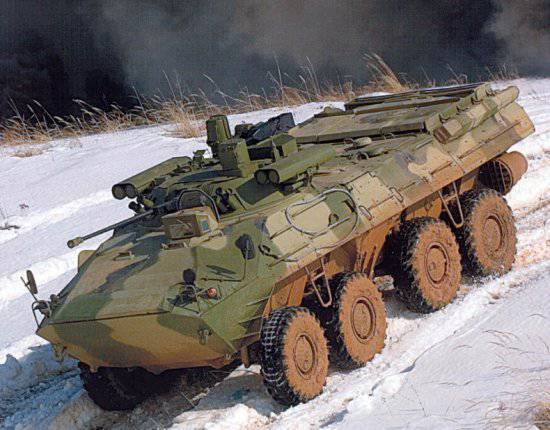
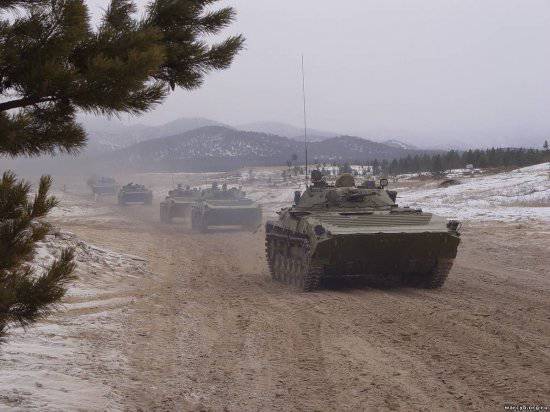
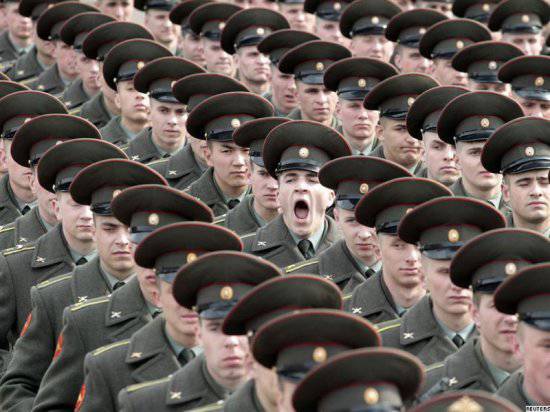
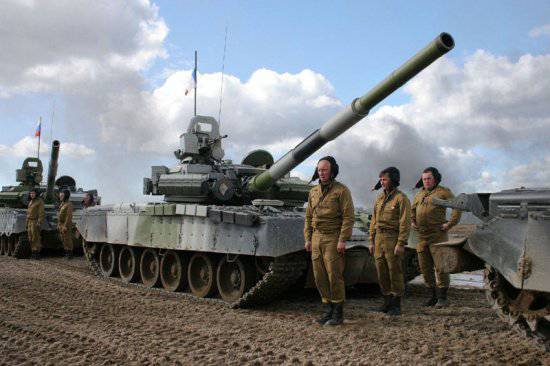
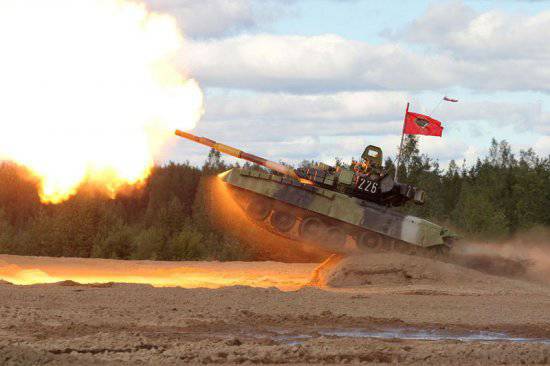
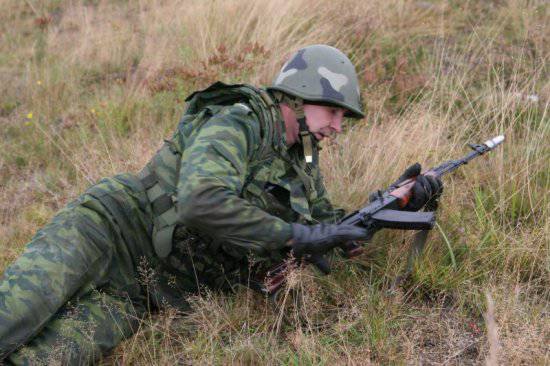
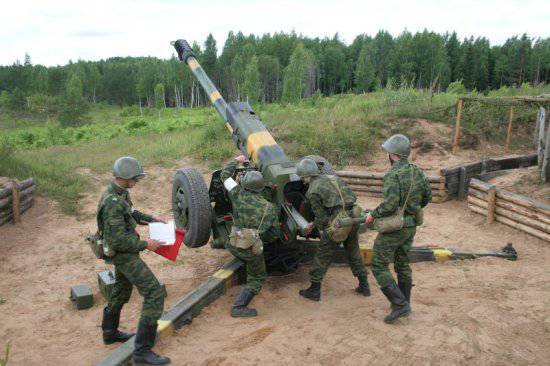
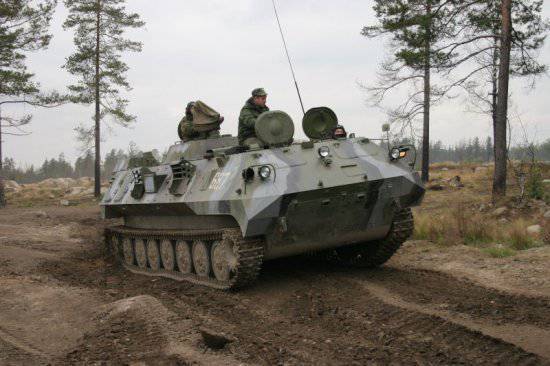
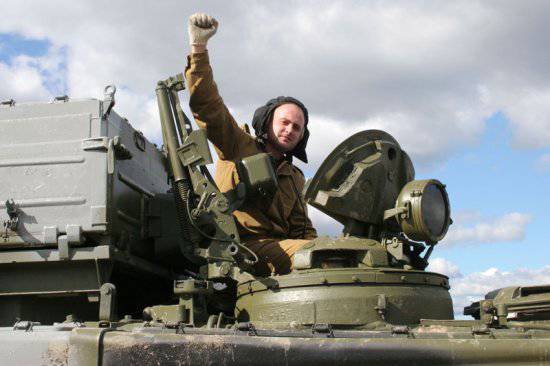
Information